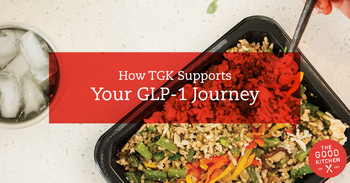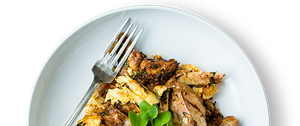Paleo On The Fly
How to plan an international trip, paleo-style.
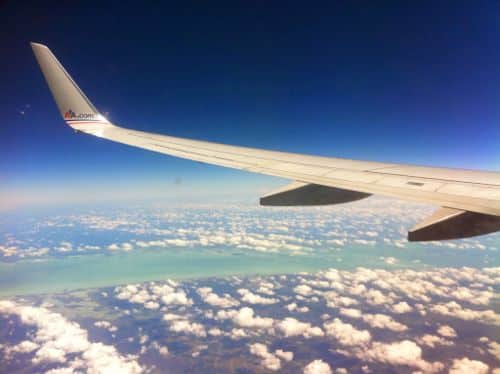
Are Travel Days Automatically Cheat Days?
Some make the argument that trips and vacations are a good time to relax the rules of the diet and fit in cheat days, especially on the initial travel day to your destination and on the return. For those of us who have found that staying strictly paleo is the key to kicking a major illness, this is not an option. For example for me, having been able to achieve remission from Crohn's disease following a strict Paleo/scd diet, cheating on travel days is not a great option. Luckily, I have figured out ways to make travel possible while staying strictly Paleo.
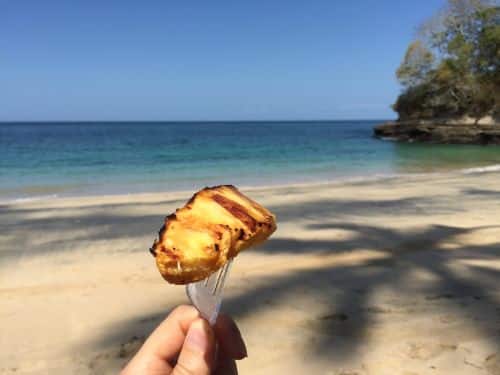
Don’t Let it Stop You
Over the last 4 years I have successfully made trips to the UK, Belgium, Italy, Spain, Australia, Japan, Thailand, Panama, Costa Rica, Puerto Rico, Dominica and Mexico as well as cross country week-long trips to Arizona, California and Texas for work, all while keeping strictly to the diet. I am happy to share what I have learned in the process – so that you can leapfrog the stage of being anxious about traveling and take away my best tips so you don’t also have to learn the hard way. For those of you who know that you will be able to relax the diet when traveling presents the biggest challenges, hopefully you can still take away strategies and know that you have options for keeping paleo.
Prevalence of Whole Food Meals Abroad
Let me start with some good news. If you are based in the United States, traveling abroad to the regions mentioned above, Latin America, Europe and to some extent Asia, will likely be a pleasant surprise compared to life in the United States. In many other countries, especially developing countries, foods are much more likely to be in their natural state. People actually still shop daily at fresh markets for their food. Traditional recipes are more likely to be made with fresh whole food ingredients. Yes, you will still need to be vigilant about checking with restaurant servers, scrutinizing product ingredients and ideally making foods yourself from scratch as much as possible. But you are starting from a base where whole foods and unadulterated ingredients are more widely used.
Meal Ingredients in Different Countries
I cannot tell you how many times I have asked questions about exactly what is in a particular dish at a restaurant when traveling abroad, only for the server to look at me like I was completely crazy. They couldn't believe I would imply that they might be adding sugar or any of the ingredients I was suggesting into the dish. Getting such a strong reaction has happened to me often enough that I believe it is not simply a coincidence or the unique personality of each staff member. This is in stark contrast to my typical experience in the U.S. Here, double checking about a food I would never expect to contain sugar or other non-Paleo ingredients, such as lemon juice or vinaigrette, often turns out to contain some kind of sugar or to be pre-made and the server cannot guarantee what it contains.
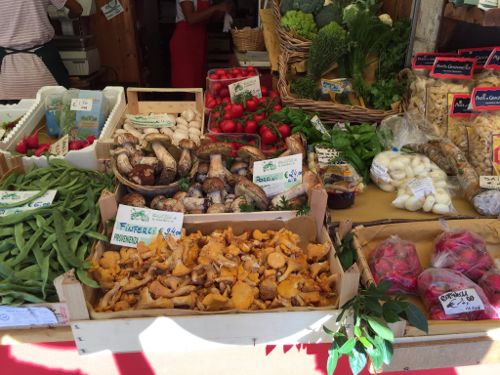
Finding Paleo Friendly Produce in other Countries
Another pleasant surprise while traveling to distant places has been the prevalence of fresh fruit and vegetable markets, local fish markets and even butchers. I have become very used to farmers markets in most U.S. cities happening on a specific day of the week such as a Saturday morning in a specific neighborhood within the city. However when traveling abroad I have noticed that fresh fruit and vegetable markets are a normal part of everyday life and are often open every day of the week, with longer hours than farmers markets here. Instead of a novelty, fresh fruit and vegetable markets are a part of each neighborhood and people’s daily rituals. This makes it easy to cook delicious in-season meals for yourself using available ingredients as long as you have access to a kitchen. One nice part of shopping for ingredients at local markets is that you often discover fresh fruits, vegetables and herbs that you have never tried or even have heard of before. This is especially true with exotic fruits in tropical locations, but even everyday staples like eggplant, squashes, citrus fruits and greens can be quite different depending on the country you are in. This gives you the ability to take a vacation from your usual menu at home and incorporate some of the local flavors by using these regional ingredients. But unlike eating at a traditional local restaurant, you still know exactly what is in everything you make. This does not mean I never eat anything from a restaurant at a destination I am visiting, but given that I am very careful about what is in the food I eat, I do find it easier to make the majority of my food myself. Incorporating this variety of ingredients helps you feel like you are not missing out.
Paleo is Going Global
Another bit of great news for those traveling abroad is that the paleo and gluten free diet trends are starting to really take off around the world. This may be more likely in developed countries and in major cities than in poorer countries and more rural locations but you might be surprised by what is out there. In addition to paleo friendly restaurants popping up in cities throughout the U.S., there are now Paleo restaurants in cities throughout the world like Berlin, Montreal, and multiple cities in Australia. I have even seen Paleo catering services offered in cities like Manila in the Philippines. If you are trying to find a paleo or gluten free restaurant, it is a lot more likely in major cities today than even a few years ago. It’s worth doing some quick internet research before going to a new place to see if there are paleo friendly restaurants or even other paleo services available.
Get your Questions Answered
There is another equally positive side effect of the increased emphasis on gluten free and grain free diet trends going global. Food establishments of all kinds are becoming more familiar with these types of food requests, not only in the U.S. but in cities around the world. My sense is that there is a growing awareness and respectfulness of special dietary needs increasing around the world. There is a good chance the staff at your average healthy cafe has been asked questions about the ingredients in their foods previously by other customers. So they will be more likely to be able to answer more authoritatively having asked the kitchen these kinds of questions previously. That all said, I personally choose to still be extremely skeptical and assume that most food in a restaurant or café is not fully Paleo unless I am able to confirm this myself. The best way I know to do this is by asking detailed questions on all ingredients used. How seriously each place takes allergies and food sensitivities does vary quite a bit, both between countries and cities, but also from one establishment to the next, just as it does within in the U.S.
Tips for Flights on the Paleo Diet
Taking long distance trips on the Paleo Diet can be a challenge. This is especially true if your travel day (or days) involve long flights. On flights where meals are served, you often will not be able to eat the food provided by the airlines. This means you will have to bring the food you need on board with you. Although options are slowly improving, I am rarely able to eat anything much at layover airports or pick up much in the way of paleo friendly food supplies at airport stores.
Paleo Airline Friendly Snacks for Flights
Luckily most food items are allowed on flights as long as they are not liquids. You are able to pack your favorite non-refrigerated snacks and even meal ingredients. Bringing perishable fruits, vegetables or even pre-made foods with you to eat on your flight and during layovers at airports is allowed however. So you don’t have to stick to just nuts and dried fruit as your only food source on your big travel day. Anything you bring with you can be eaten during the whole travel day up until you pass through customs at your destination. It is only at your final destination country that you pass through customs and an agricultural inspection of food items when you land. You can pack fresh produce like avocados, oranges, bananas and cured meats or smoked fish for the flight. If you are feeling like really planning ahead, you can even pack refrigerated dishes you serve cold like homemade paleo slaws and salads, roasted cauliflower/squash or even cooked meats. This is possible by bringing a cooler bag with you, or packing frozen gel packs to keep your food cool throughout the duration of the flight. I personally like to bring avocados and a fresh lime with salt as a dressing. Or I usually bring a small container of homemade vinaigrette. Since the vinaigrette is considered a liquid, I pack it in a container that is 100ml or less, the size approved by the TSA. I also compliment the fresh items with non-perishable food such as macadamia or other nuts, dried fruit and canned fish like tuna or sardines.
Paleo Friendly Airline Food
I have not come across an airline that serves truly paleo compliant food. But there are some airlines that are better than others. For example, some international carriers offer a fruit only special meal option, which tends to be almost completely paleo (although not necessarily very filling). Some of the airlines offering these Fruit Platter Meals or “FPML” include Air Canada, Lufthansa, Singapore Air, Qantas, Cathay Pacific and Emirates. Most airlines, even US carriers, do include a side salad these days with most meals that they serve. This can be a great base for creating a paleo friendly salad, by adding condiments that you bring yourself, such as cherry tomatoes, avocado or baby carrots. Because these salads tend to be just lettuce and some vegetables and come with the dressing on the side, this makes it simple for you to bring your own paleo dressing. As mentioned earlier, I like to make a paleo olive oil and vinegar dressing to take with me in a small TSA approved squeeze bottle under 100ml. Oil and vinegar dressings do not have to be refrigerated. It is even possible to find some paleo friendly mustards with no sugars that do not need refrigeration and can be added to the vinaigrette. What you don’t use of the vinaigrette can be very useful when you arrive at your destination. Homemade oil and vinegar dressing is great for topping a quick salad when you first arrive or to take to a restaurant in case they don’t offer a paleo friendly dressing. I have never been given a hard time about bringing a vinaigrette container through customs in any of the countries I have traveled to.
Are Gluten Free Airline Meals a Safe Bet for Paleo?
I would recommend steering clear of most airlines gluten free options. In general most of the items served are not paleo. From my experience, many airlines try to cover all of their specialty meals by creating a single meal that meets all of these requirements: vegan, lacto ovo vegetarian, gluten free and kosher. So the meals are typically something like whole grains with sauteed vegetables and items like margarine and gluten free (but not paleo) rolls. It’s a bit of a toss-up whether you get a more paleo friendly salad when ordering the gluten free meal option or a regular airline meal. I would say this varies by the airline.
Trading Up
If you are traveling with family members or friends that are not keeping Paleo, one strategy I have used successfully in the past is to order a special gluten free meal for myself (as I’m not going to be eating my meal anyway) and trade salads or other items with my travel companion. If one meal has a plain salad, fruit for desert or something Paleo friendly while the other does not, you can trade for that item. Your travel companion has a choice of any of the remaining non-Paleo food options, with slightly different entrees being offered in the regular and gluten free meal, so they can choose the one they like better. If I’m traveling on one of the international carriers that offers a fruit only meal, I typically choose that these days. To play it safe, I never expect to be able to eat more than 20 percent of whatever airline food I am served. I plan to supplement the remainder of my meals by using food I have brought on board with me.
Keeping Paleo on the Trip Back Home
In terms of the flight home from a destination, I typically do the same thing as my initial travel day, but in reverse. If I‘m coming back to the U.S. from an international warm weather destination, I will make sure I have some leftover fresh fruit, avocados and other perishable food items to eat on the flight back home. Any cooler bags and gel packs can be re-frozen and re-used for the trip home as well. As long as you eat what you bring on the flights before going through customs at home, there should not be a problem. In talking to U.S. customs agents, what I have been told is that you are asked to finish and leave all fresh produce and perishable food on the plane before exiting into the airport. Apparently all waste taken from international flights into the U.S. is incinerated in a special way at the airport. This is to kill any plant diseases that could possibly spread to plants/crops here from the trash on the flight. The only exception to this I have encountered was leaving Hawaii and heading back to the mainland U.S. There was a special agriculture check point as you first arrive at the airport in Honolulu before you get on your flight. This was to make sure you aren’t taking any fruits or vegetables that were grown in Hawaii back to the US. Any imported produce from the mainland U.S or prepared refrigerated foods could be taken through the checkpoint, so those are better options to pack for flights returning from Hawaii. They are specifically looking for Hawaiian fresh produce at the checkpoint.
Bringing Frozen Food Items with You When You Travel
If you can time it right, frozen food is technically allowed by the TSA. Liquids are even allowed as long as they are frozen when passing through security at the departure airport. You could imagine bringing homemade Paleo Ice Cream with you to eat on a flight! Since the TSA does allow you to bring food with you through airport security, even foods containing liquid such as soups and stews as long as it is frozen at the time you pass through security, this means that bringing frozen meals with you when you travel is generally an option. I typically pack the food in a cooler bag, available at most grocery stores and add a few gel packs from the freezer to ensure the food stays frozen. This has worked well for me with my food staying quite cold, even on very long travel days with layovers.
Worried You Will Not Be Able to Find Paleo Friendly Food at Your Destination? Bring it With You
I have brought frozen meals with me on a trip several times in the past. Mostly when I wasn’t sure if I was going to have time to shop for and prepare food at my destination. Examples were attending a conference for work, visiting family or when I wasn’t sure if I could find paleo friendly ingredients easily, such as when traveling to a remote area. You will need at a minimum a microwave or small kitchenette to reheat the food at your destination. But with most hotels offering refrigerators and even microwaves upon request for those with food allergies, this is becoming increasingly a viable option everywhere. This means for example that you could order frozen meals from The Good Kitchen prior to your trip, and take the frozen meals with you when you travel to keep in the freezer at your destination. This way you will always have paleo friendly food on hand in case you don’t have the time to cook, such as on a family vacation or when visiting friends. If your destination is within the US, you can also time ordering frozen meals to be delivered to your destination shortly after arriving. Many hotels will hold packages for you at the front desk, and if you ask for the mailing address, you can order packages to most vacation rentals.
Get Out There
Gaining the ability to travel and stay fully on the Paleo diet has been a major relief for me. I love to travel, and although it takes some extra planning, being able to take care of my health and still travel has been well worth the effort. I hope you have found some of the tips offered here useful. If you have any tips or strategies that have worked for you to keep Paleo while traveling, we would love to hear them! Please leave them in the comments below.
The above is a guest post by Zach Friedman of mypaleos.com.



